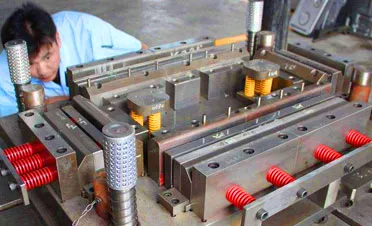pewter sand casting
Pewter Sand Casting A Traditional Art Form Revived
Pewter sand casting is a remarkable process that marries ancient craftsmanship with modern innovation. This technique involves pouring molten pewter—a malleable tin alloy—into a sand mold, allowing artisans to create intricate designs and functional objects. As a fusion of artistry and utility, pewter sand casting not only preserves historical traditions but also caters to contemporary design needs.
The History of Pewter
Pewter's origins trace back to ancient civilizations, where it was often used for making utensils and decorative objects. Composed primarily of tin, pewter was traditionally alloyed with lead, copper, or other metals to enhance its durability and workability. However, modern pewter is largely lead-free, consisting primarily of tin combined with small amounts of copper and antimony for strength. This shift has made pewter safer for food-related applications and more appealing to contemporary artisans.
Sand casting itself is one of the older metalworking techniques, with roots going back over 5,000 years. The method gained prominence due to its simplicity and the ability to create complex shapes, which cannot be achieved easily with other casting techniques. Today, the art of pewter sand casting is experiencing a resurgence as more creators seek sustainable and nostalgic materials that resonate with the artisanal movement.
The Sand Casting Process
The sand casting process is both an art and a science, involving multiple stages. First, a pattern of the desired object is created, typically using wood or metal. This pattern is then pressed into fine sand mixed with a binding agent, forming a mold. The mold captures every detail of the pattern, which is essential for creating intricate designs.
Once the mold is prepared, molten pewter is poured into the cavity, filling it completely. The pewter is heated to approximately 450°C (842°F), ensuring it is in a liquid state that can flow easily into all the crevices of the mold. After the pewter cools and solidifies, the sand mold is broken away, revealing the cast object.
The final stages involve cleaning and finishing the piece. Artisans may polish the surface, apply patinas, or even incorporate additional embellishments. This stage is where personalization and creativity shine, allowing each piece to become a unique work of art.
pewter sand casting

Applications of Pewter Sand Casting
Pewter sand casting has a diverse range of applications. From home décor items like candle holders and picture frames to functional kitchenware such as mugs and plates, pewter can be shaped into various forms. The metal's malleability allows artisans to create intricate designs that serve both aesthetic and practical purposes.
Furthermore, pewter's appealing luster and warm tones make it a popular choice for jewelry. Necklaces, bracelets, and earrings crafted through sand casting attract those seeking unique, handcrafted items. The versatility of pewter enables designers to experiment with textures and finishes, resulting in pieces that are both modern and timeless.
The Revival of Artisanal Pewter
In recent years, there has been a significant movement toward sustainable and locally made products. This shift has invigorated traditional crafts, including pewter sand casting. Many artisans are reviving historical techniques while infusing modern sensibilities into their work. By doing so, they not only honor the past but also cater to a growing audience that values craftsmanship and authenticity.
Workshops and classes focused on pewter sand casting are gaining popularity, allowing enthusiasts to learn this ancient craft. These educational opportunities serve to keep the art alive and inspire a new generation of crafters. By passing down knowledge and skills, the community helps ensure that pewter sand casting remains a vibrant and essential part of our cultural heritage.
Conclusion
Pewter sand casting is more than just a manufacturing technique; it is an expression of creativity, tradition, and craftsmanship. As the world continues to embrace artisanal products, this age-old method of working with pewter is experiencing a well-deserved revival. Whether as a means of creating functional items or as a form of artistic expression, pewter sand casting stands as a testament to the enduring appeal of handmade goods in an increasingly automated world. Embracing this craft ensures that its heritage and artistry will be cherished for generations to come.
-
Precision Sheet Metal Stamping Manufacturer | Fast & ReliableNewsAug.01,2025
-
OEM Sand Cast Pump Valve Fittings - Baoding Hairun Machinery And Equipment Trading Co., Ltd.NewsAug.01,2025
-
Custom OEM Impellers | High Efficiency & PrecisionNewsAug.01,2025
-
OEM Sand Cast Pump Valve Fittings - Baoding Hairun Machinery | Customization, Quality AssuranceNewsAug.01,2025
-
OEM Sand Cast Pump Valve Fittings - Baoding Hairun Machinery And Equipment Trading Co., Ltd.NewsAug.01,2025
-
OEM Sand Cast Pump Valve Fittings - Baoding Hairun Machinery And Equipment Trading Co., Ltd.NewsJul.31,2025















